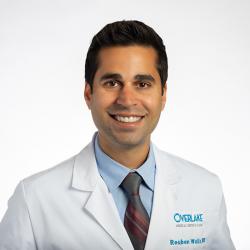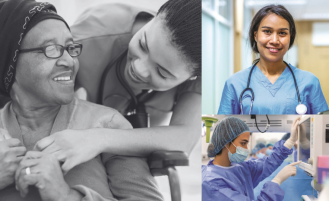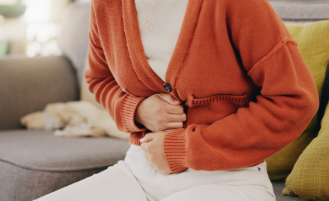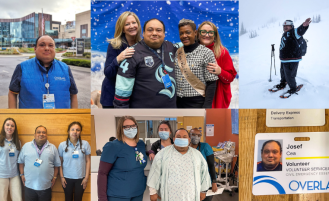Do You Need a Sleep Study?
June 25, 2022
There are different stages of sleep, and each stage has aspects that can be measured. A sleep study is a number of tests recorded at the same time during sleep. The tests measure specific sleep aspects and help diagnose sleep disorders.
Sleep studies generally take place in a sleep lab during your normal sleeping hours. But they can sometimes be done at home. The goal is to record brain and body activity that happens during sleep. Then, any sleep disorders can be diagnosed and treated.
A sleep study most often is recommended when there is a suspicion of sleep-disordered breathing such as obstructive sleep apnea or central sleep apnea. Other common reasons for a sleep study include snoring too much, daytime sleepiness, insomnia, being very sleepy during the day and falling asleep without warning (narcolepsy), and conditions that cause leg discomfort (like restless leg syndrome). You may also need a sleep study if you have unusual behaviors during sleep such as sleep walking or talking, or rapid eye movement disorders.
Reuben Walia, MD, with Overlake Clinics Sleep Medicine, shares the two types of sleep studies, what happens during a sleep study, and typical results and treatments.
What are the types of sleep studies?
There are two types of studies that can be performed: a facility-based sleep study, known as a polysomnography, and a home sleep test. These studies can be used to evaluate the effectiveness of airway surgeries, weight loss, or certain treatments such as CPAP, BiPAP or oral appliance therapy.
A polysomnography may also be recommended to evaluate for a condition called periodic limb movement disorder. Sometimes, daytime facility-based tests are performed to study sleep during multiple naps. This test is recommended to evaluate for conditions that may cause excessive daytime sleepiness.
How long does a sleep study take?
A nighttime sleep study is often done for one night and is performed for the entire time the patient is asleep. A minimum of six hours of recording time is recommended; however, most of the time a diagnosis can be made even if the patient has trouble falling asleep or staying asleep.
What happens during a sleep study?
If the patient is undergoing a facility-based sleep study, polysomnography, they would arrive at the sleep lab between 7 p.m.–8:30 p.m. They would then be greeted by a night technician and taken to a sleep study room. This room is similar to a hotel room with a private bathroom. The patient will then get ready for bed, and the night technician will attach multiple monitors with stickers, adhesive gel and belts to the patient. These monitors will be placed on the patient’s head, face, chest, finger, legs and sometimes arms. Wires from these attachment points lead to a central monitoring device at the bedside. The placement of these monitors will allow for examination of brain waves, eye movement, muscle tone, breathing, heart rhythm, blood oxygen and limb movements. The patient is then allowed to sleep and will be woken up six to eight hours later.
During this study, the night technician is in a separate control room and is available through the night to assist the patient. If a monitor falls off or is pulled off, the patient is alerted, and the technician will reattach it. In the morning, the monitors are removed, and the patient can leave. The collected data is then analyzed by a technician and a Sleep Medicine physician.
If the patient is doing a home sleep test, they will meet with a technician who will demonstrate how to place the testing device and activate it. A home sleep test typically consists of a nasal monitor, belt around the chest and a finger monitor. These components monitor air flow, thoracic movement, blood oxygen and heart rate. The patient will take the testing device home and place it on themselves prior to bed. After the night of sleep, the device is returned to the clinic to be downloaded and analyzed.
What are some typical results from a sleep study?
The most common result of a sleep study is a diagnosis of obstructive sleep apnea (OSA). This is a condition where pauses in breathing occur multiple times per hour due to a relaxation of the upper airway during sleep. A condition called central sleep apnea (CSA), which is less common than OSA, can also be diagnosed. This condition similarly causes multiple pauses of breathing; however, this is due to a miscommunication with the brain and the muscles responsible for breathing. Both OSA and CSA can lead to a drop in blood oxygen levels at night, which can disrupt sleep and may increase the risk of a heart attack, stroke and/or arrhythmia.
During a facility-based sleep study, a condition called periodic limb movement disorder may be diagnosed. This condition causes repetitive, involuntary movements of the limbs, usually legs, through the night. It can result in trouble staying asleep, daytime sleepiness or fatigue. Other less common sleep disorders may be evaluated during a facility-based sleep study.
What are typical treatment recommendations after receiving results of a sleep study?
If a sleep study identifies sleep disordered breathing, treatment options often include positive airway pressure (PAP) therapy (such as CPAP or BiPAP), oral appliance therapy or surgery.
If a polysomnography identifies periodic limb movement disorder, treatment may consist of the addition of medications or adjustment of current medications.
Does insurance cover the cost of sleep studies?
Sleep studies are covered by most insurance companies. However, the out-of-pocket costs of a study will depend on the type of insurance plan and deductible amount. The type of study initially ordered may also depend on the insurance company and rules of the insurance plan. Often, insurance companies will require a home sleep test first to evaluate for sleep-disordered breathing. In those cases, if the results are negative or inconclusive, insurance will then approve a polysomnography. This is because home sleep tests may underestimate the results and can result in a false negative.
If poor sleep is a recurring issue for you, or you are concerned about breathing or movement conditions affecting your sleep, don’t hesitate to schedule an appointment with your healthcare provider to assess whether a sleep study is right for you.









